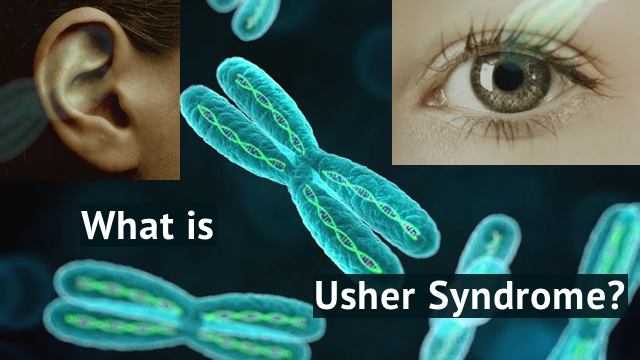

Clinical expression of mutations in the USH3 gene, CLRN1, is clinically quite variable and may present with a severe course indistinguishable from USH1.Ītypical USH: Clinical manifestations differing from the above subtypes have been described in patients with pathogenic biallelic variants in USH genes. Hearing loss is congenital and progressive and may finally require CI supply. USH3: This subtype is very rare in Central Europe, but common in some founder populations (Finland, Québec, Louisiana). RP is diagnosed in puberty or in the early twenties in most cases. Hearing loss is congenital, stable or slowly progressive and usually does not require CI. USH2: This is the most common (two-thirds of the cases) and mildest clinical subtype.

Vestibular impairment is common, often reflected by delayed achievement of motor milestones – a possible first hint for USH in deaf infants. USH1: This is the most severe subtype with profound congenital hearing loss that usually requires cochlear implants (CI), and onset of RP already in the first decade. References are given for less known allelic disorders that have no locus names yet, for alleles which are underrepresented in reviews on USH genes and for USH1M, a recently described USH locus. Indicated prevalences of mutations in a gene for clinical subtypes are approximate values, deduced from large NGS studies, , and do not take into account the predominant role of the otherwise rare genes CLRN1 ( USH3A) and USH1C in populations like those in Finland, Louisiana or Québec.ĪRNSHL, autosomal recessive non-syndromic hearing loss.ĪDNSHL, autosomal dominant non-syndromic hearing loss. The Usher syndrome genes, defined as genes whose mutations cause simultaneous RP and sensorineural deafness and whose gene products interact within the “USH protein complex.” Gene locusĪdhesion G protein-coupled receptor V1 (cell-surface calcium-binding GPCR)Ĭask-interacting protein 98, whirlin (scaffold protein)Ĭlarin-1 (hair bundle protein, function largely unknown)ĪDGRV1 and PDZ domain-containing 7 (scaffold protein) The clinical classification comprises three types, USH1–USH3: The importance of the USH proteins for retinal photoreceptor cells’ function and maintenance is reflected by RP manifesting later in the course of the disorder, with night blindness as the first symptom, followed by progressive concentric constriction of the visual field, ending up as tunnel vision and leaving cone-derived central vision often unaffected. USH initially manifests as non-syndromic hearing loss.

USH is characterized by very early – usually congenital – sensorineural hearing loss that may be accompanied by vestibular impairment in USH types 1 and 3 (see below). Allelic disorders linked to USH gene loci are non-syndromic deafness and (mostly USH2A-related) non-syndromic retinitis pigmentosa (RP) (and pituitary adenomas, a rather unexpected expression of certain monoallelic CDH23 mutations ) ( Table 1). USH is the underlying diagnosis in approximately 11 % of children with bilateral hearing impairment (often comprehensively termed “deafness”), with a population prevalence of about 1/6000. The USH gene loci have numeric and alphabetic designations according to the clinical subtype and the order of their initial descriptions (e. g. Usher syndrome (USH) is an autosomal recessive trait currently known to result from mutations in 11 genes.


 0 kommentar(er)
0 kommentar(er)
